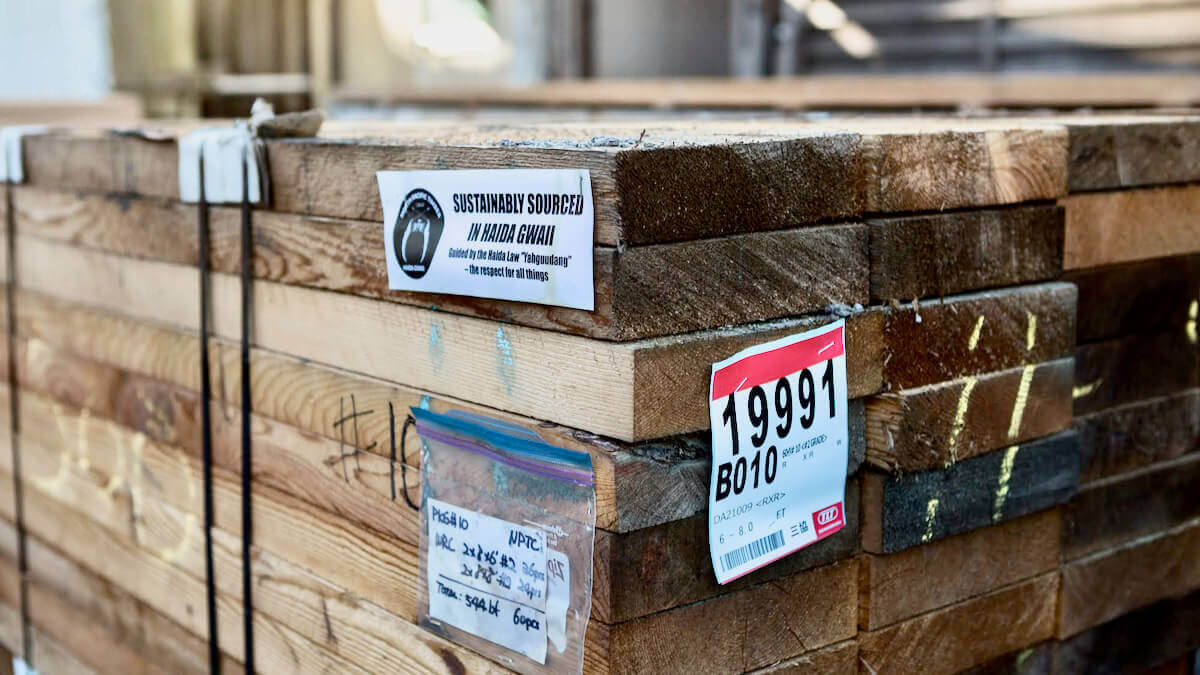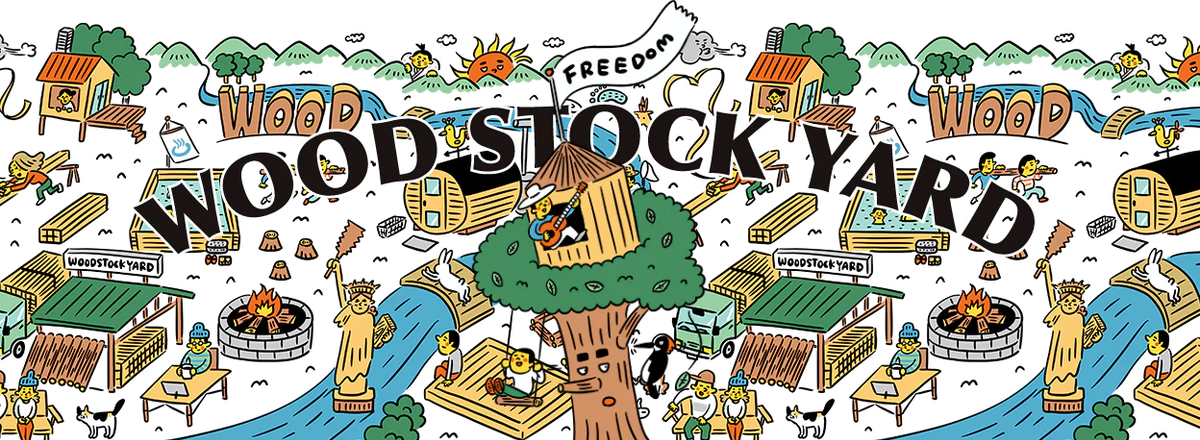こんにちは、林 隆宏です。
モノサスでは、Web制作事業を母体としながらさまざまなプロジェクトに挑戦しています。農業と食だったり、社員食堂だったり、地方でエンジニア育成にチャレンジしてみたり、はたまたマリオネットだったり・・・。
今回僕がチャレンジしたのは木材の販売、そのなかでも未活用材と呼ばれる、一般流通から外れてしまった木材を販売するプロジェクト。
この記事では、僕がどういういきさつで一見Web制作とはなんの関係もない木材販売のプロジェクトに挑戦することになったのか、使われてこなかった木材を愉しく活用していく様子などを紹介していきたいと思ってます。
プロジェクト名は「WOOD STOCK YARD」と名付けました。
まずは、僕と未活用材との出会いについてお話ししたいと思います。
奇跡のタイミングで未活用材の魅力にハマる
きっかけのひとつめは僕自身の引越しと、それにともなう家の新築でした。
転職を機に大阪から東京に出たのが27歳のとき。それから41歳になるまで14年間住んでいた東京だけど、子どもが生まれ大きくなるにつれ、東京で暮らすことへの違和感が拭えなくなってきました。よくある話です。そこで紆余曲折を経て、2020年の4月に家族で長野県の軽井沢町に引越すことになりました。
当初は中古でよい感じの家を探してセルフリノベーションして住むつもりでいたのですが、家族の都合でかなり立地を絞って探していたことと、頻繁に親が来ることを想定すると、適当な物件がすぐに見つかるとは思えず、「もういっそのこと建てちゃうか」となったわけです。
そうして思いがけずに始まった家づくりのプロジェクト。家の具体的なプランを考える前から心に決めていたことは、「木造であること」と「外壁も木にすること」。中でも外壁を木にすることには強い希望があり、個人的にいろいろと調べていました。
そんな時に、モノサスのコーポレートサイトから一件の問い合わせがきます。新木場にある木材会社さんから「Webサイトのリニューアルを検討している」という案件のご相談です。
その問い合わせの中身を見た時に「ん?」と思ったのです。
「この会社さん、知ってるぞ・・・」
なんと、僕が個人的に家の外壁用の木材を探しているときに「いいなぁ」と思ってWebサイトを拝見していた会社さんだったのです。でも我が家の建築コストとは折りあわず指を咥えて見ていたのでした。
けれども、Web制作案件となれば別の話。営業担当に早速連絡をして「俺、この案件やりたいから一緒についていくわ」と出しゃばっていったわけです。
そうしてはじまった木材会社さんのWebサイトのリニューアルプロジェクト。
それはもう楽しくて仕方のない仕事。
もうお分かりかと思いますが、これが僕と未活用木材との出会いです。
家を建てるタイミングと、木材会社さんのWebサイトのリニューアルプロジェクトのタイミングが奇跡のように重なって、僕は未活用の木材にどっぷりとはまりこんでいくことになったわけです。
木材会社の悩みの種だった“デッドストック材”を救いたい
我が家の外壁はたっぷりと無垢の木をスノコ張りしたものになりました。
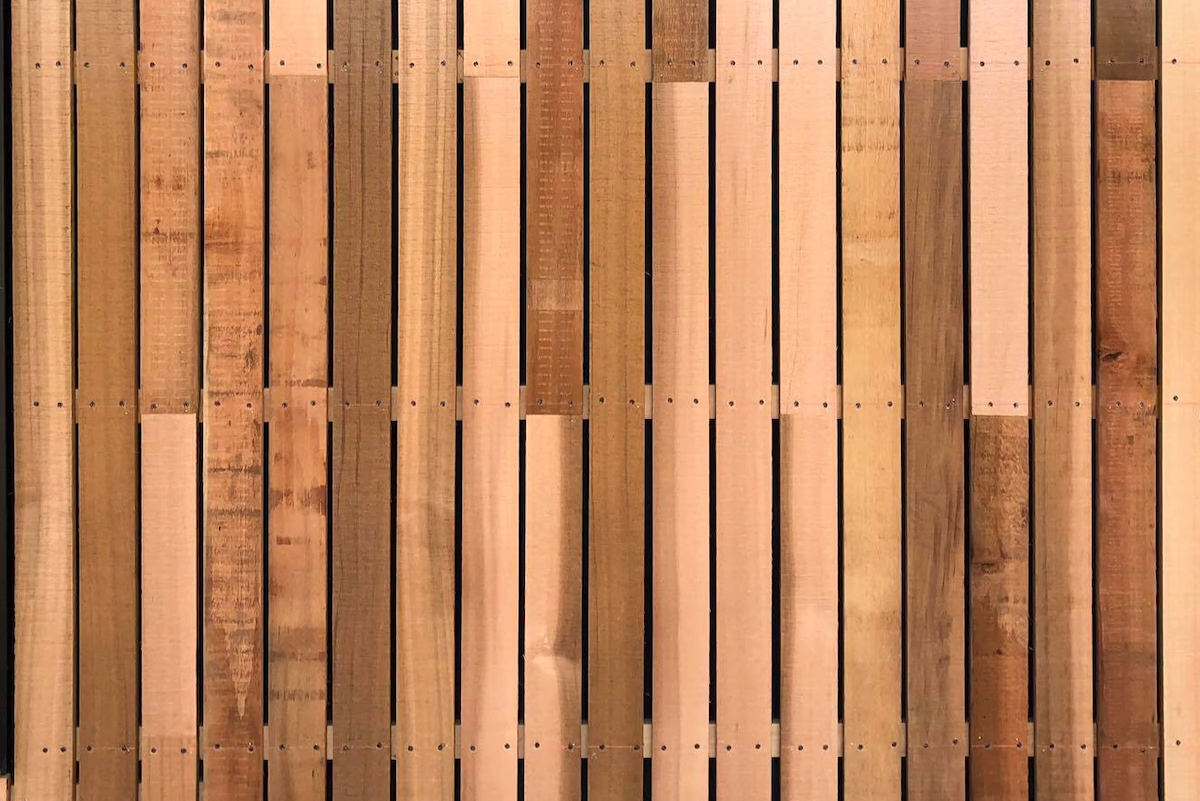
すのこ張りの外壁はこんな感じ。ウエスタンレッドシダーの板材を一定の間隔をあけて縦に張ってます。
材は、乱尺・乱厚・乱巾で、適度なムラがお気に入り。
しかも、そもそも日本の規格にないサイズなので、木材屋さんからデッドストックの材を分けていただき、当初覚悟していたよりも大幅に予算を抑えることができました。
通常なら「無垢板の外壁が安くできてよかったね」という話なのですが、Webサイトリニューアルの打ち合わせをしている際に、僕が何気なく「いやぁ、デッドストックをご提供いただいてほんとに助かりました。ありがとうございました」とお礼を言ったところ
「いやぁ、喜んでいただいてなによりなんですが、うちにとってデッドストックの材はほんとに悩みの種です。新木場中の木材屋が困っていると思います・・・」
という返答が。
それまで製品材として売られている木材のことしか視界に入っていなかった僕は、この時はじめて木材会社が未活用材に苦しんでいるということを知りました。
また、このときはじめて流通に乗らない未活用の木材の存在をはっきりと認識しました。
我が家に分けてもらった木材はたまたま運良くあっただけだと思っていたのだけど、よくよくお話しを聞いてみると、全く違った側面が見えてきたのです。
木材会社が仕入れてきた木は、実際に販売できる材と、なんらかの事情があって売れない材とに仕分けされるのですが、素人の僕が想像していたよりはるかに多くの割合の材が流通から外れてしまっているのでした。仕入れのロットによってその割合は大きく違うけれど、少なくとも1割、製材メーカーによっては5割近くが仕分けではじかれてしまうこともあるそう。
これまで何度か製造メーカーのサイトを作ってきた経験からすると、製品の歩留まりというと、99%以上が当たり前の感覚。
ところが木材では売れない材の比率が数十%という割合に至ることがあるというのは、とんでもない衝撃でした。しかも流通の川上ではじかれるならまだしも、最終利用されるすぐ手前の川下付近でこんなにも多い割合ではじかれるというのには驚愕しました。
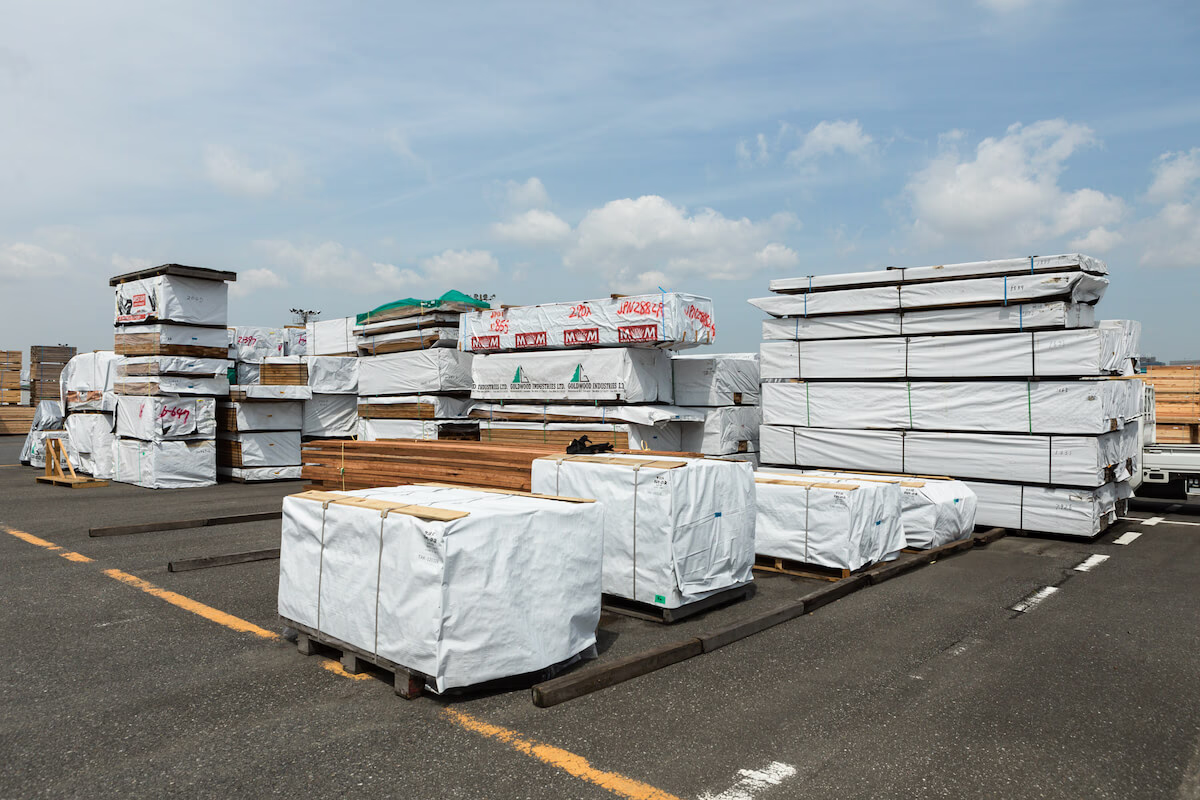
選別されはじかれてしまった木材は屋外のストックヤードに積まれ保管されている。
当然のことながら売っている材の価格は、そのことを加味した価格にはしてあるものの、そうは言っても相場がある世界、あまりに高くすると当然ながら売上が落ちてしまいます。
もちろん樹種や用途、仕入れ方、製品への加工の仕方など変数は多くあるので、一概には言えないのですが、経常利益率が10%もあれば優秀だと言われるビジネスの世界で、この割合は木材会社の経営を大きく圧迫していることは想像に難くありません。
じゃあ、売れなかった木はどうなるのか。
まずはもちろん売ることを考えます。けれども、流通の仕組みから外れた木というのは本当に驚くほど売れないのです。一部それでもある程度値段を下げれば売れてゆく材もあるのですが、大半はストックヤードに積まれた状態で長い時を過ごすことに。
「最終的にはどうしてるんですか?」と聞くと
「なるべく長期間保管して、適する案件があればお客さんに提案するけど、それでもどうしようもないものは、銭湯に引き取ってもらって薪になっている・・・」
というではありませんか。
銭湯のボイラーの中でメラメラと燃える天然林の木の映像を想像しながら
「これは、どうにかしないと・・・」
と思ったのを今でも覚えています。
最終的にどうにも活用できないものがバイオマス燃料として活用されるのは、もちろんあるべき姿だとは思うのですが、僕から見た時に目の前に積まれている未活用の木材の山がどうしても燃料には見えなかったのです。
こうして木材屋さんと僕の一蓮托生の、未活用木材販売プロジェクトが幕を開けることになったのでした。
2022年8月4日、木材会社のストックヤードに眠っている木材に新たな価値を見つけるプロジェクト「WOOD STOCK YARD」をスタート。主にウェスタン・レッドシダーの未活用材を販売するとともに、さまざまなDIYプロジェクトを展開しています。
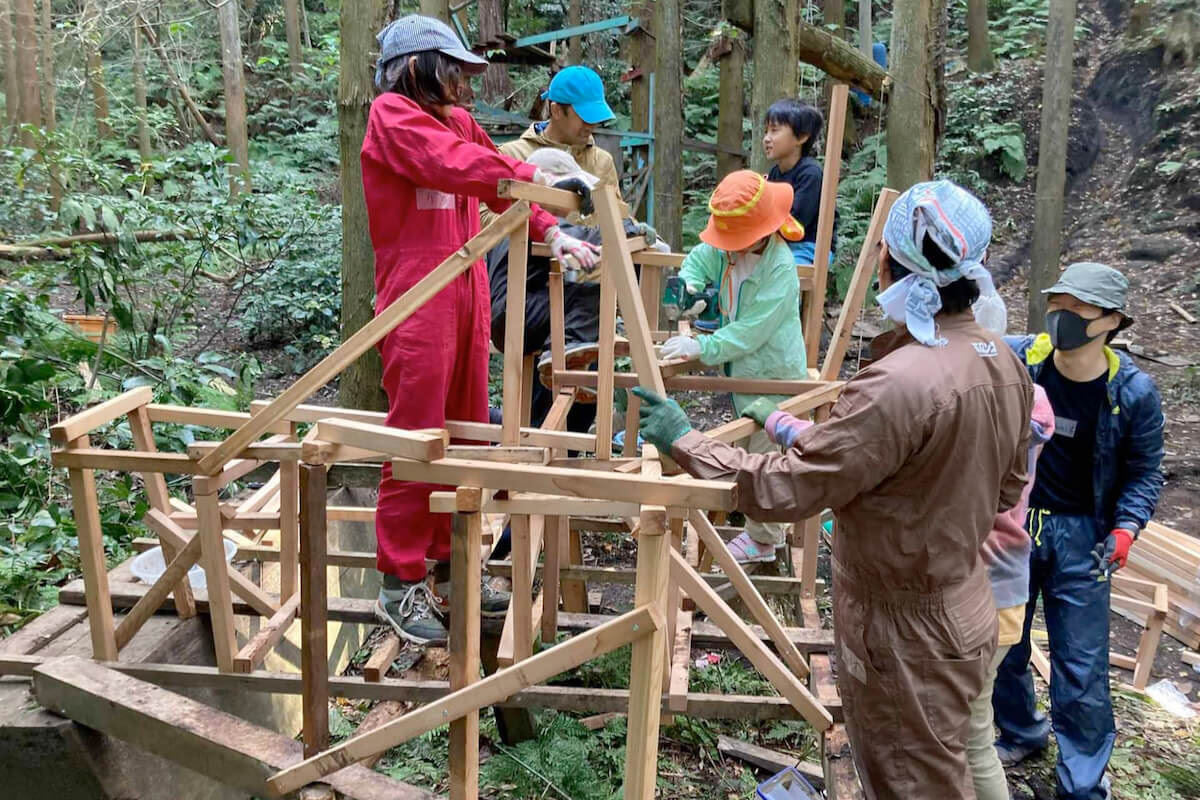
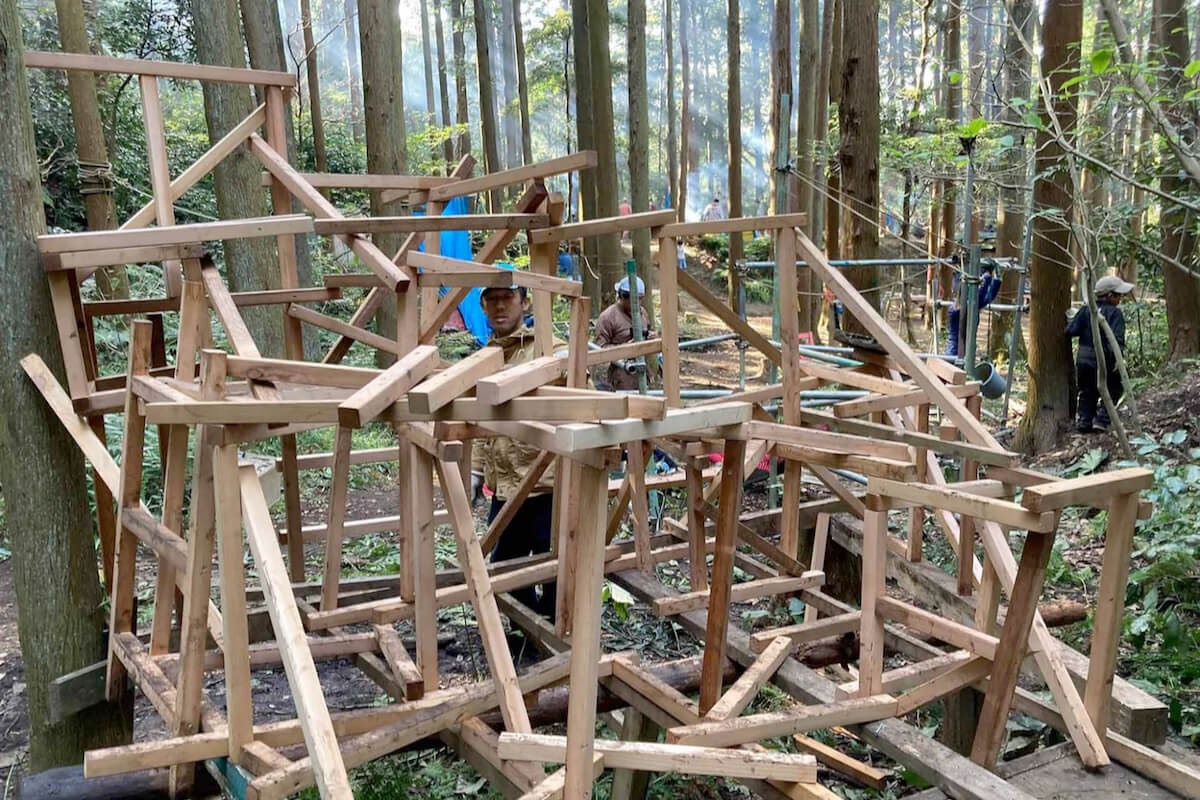
神奈川・逗子市を中心に大人と子どもの遊び場をつくる「原っぱ大学」では、未活用材でジャングルジムをDIY
より多くの人に規格材では味わえない木の愉しさを知ってもらえるとうれしいです。また、新しい動きがあったら、ものさすサイトでもご報告します。どうぞお楽しみに!(つづく)
